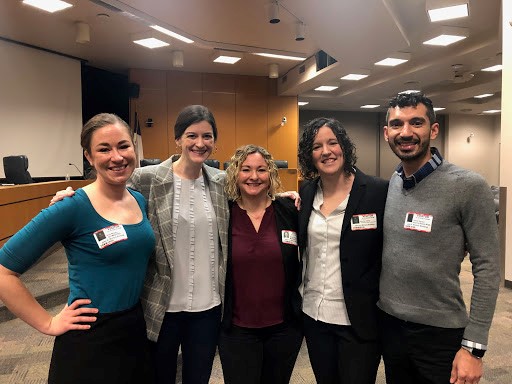Launching our new monthly feature
TexProtects is pleased to launch our latest monthly feature, Frontline for Children. In it, we will share the newest and most noteworthy child protection research and resources to keep you in the know and inform your work. Our new partnership with Child Trends–the nation’s leading nonprofit research organization focused exclusively on improving the lives and prospects of children, youth, and their families–has expanded our ability to ensure that we are able to keep you connected to innovations and data that will inform policy and program to ensure that every child is safe, nurtured, and resilient.
New and Noteworthy – Child Protection Research
Pediatricians and Child Psychiatrists Suggest Comprehensive Approach in Caring for Children who Have Been Maltreated (American Academy of Pediatrics)
“’Ideally, pediatricians work closely with therapists and psychiatrists when treating children who have been maltreated, but we know this is not always possible,’ Dr. Keeshin said. ‘This report offers pediatricians some tools to help children and families address mental health problems that stem from maltreatment.”

TexProtects’ Takeaway: To ensure the most effective interventions for healing and to minimize the use of psychotropic medications, medical, social, and trauma histories should be integrated when working with children who have experienced maltreatment.
Opportunities for States to Improve Infant Health Outcomes (Center for American Progress)
Features an interactive map of infant health outcomes by race and ethnicity, across states. In Texas, the state average infant mortality rate is 5.8 per 1000; however, for African American/black infants the rate is 9.8 per 1000. Similarly, 8.4% of Texas infants are born low birth weight; however, that rate jumps to 12.4% for African American/black infants.

TexProtects’ Takeaway: Infant health outcomes are closely tied to a mother’s health during pregnancy. Texas must do more to ensure equitable access to maternal care and home visiting programs to ensure healthy beginnings for our children, particularly in our rural communities where there are the greatest disparities.
Children with special health care needs are more likely to have adverse childhood experiences
Child Trends analyzed data from the 2016-2017 National Survey of Children’s Health (NSCH), which asks parents or guardians to report whether their child has experienced any of nine out of the 10 ACEs. We found that the prevalence of ACEs is higher among children with special health care needs than among their peers.

TexProtects’ Takeaway: Trauma-informed practices should be incorporated into programs and services for these children and their caregivers to mitigate the long term-impacts associated with adverse childhood experiences. Children with SHCN are three to four times more likely to experience abuse and neglect which make up five of the ACEs.
New and noteworthy – Child Protection Policy
Who’s paying now? The explicit and implicit costs of the current early care and education system (Economic Policy Institute)
“The U.S. is already pouring billions of dollars into the current system through government expenditures and parental contributions. And yet the current system is failing parents by stretching family budgets and keeping millions out of the labor force.”

TexProtects’ Takeaway: High quality early childhood education has a positive return on investment in terms of societal benefits as well as increases in revenue and savings for government. Our Prenatal to Three Initiative with Texans Care for Children and Children at Risk has set a policy agenda to further improve this system in Texas.
Impact of $550 Million in Child Care and Development Block Grant (CCBDG) Funding Increase for States (Center for Law and Social Policy)
Offers an estimated distribution of the $550 million increase in CCDBG funds across states in 2020. Texas is estimated to receive $56,939,000 in additional funding.

TexProtects’ Takeaway: CCBDG is the largest source of federal funding for childcare; however, even with this increase, only a fraction of eligible children will have access.
Family First Transition Act passed with bipartisan support
New legislation bolsters support for the foster care system by establishing funds to help states implement prevention pieces of the 2018 Family First Act.

TexProtects’ Takeaway: These funds will allow Texas to invest in family preservation by offering high risk families evidence-based mental health, substance use, and parenting programs. The Family First Prevention Services Act is an unprecedented opportunity that should be a top priority for agencies and lawmakers involved in child protection.





